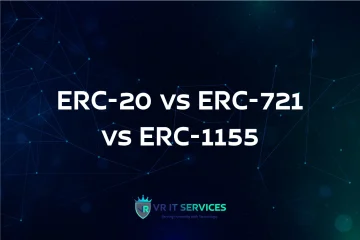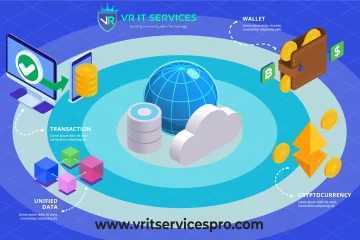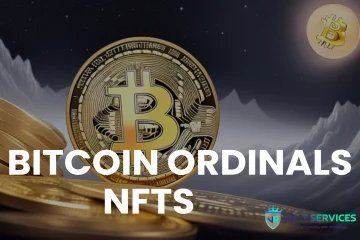OpenSea Business Model and Revenue Sources Explained: In the ever-evolving world of blockchain technology and digital assets, OpenSea stands as a trailblazer in the Non-Fungible Tokens (NFTs) landscape. As the largest Decentralized NFT Marketplace, OpenSea has redefined how creators, collectors, and traders interact with digital ownership. But beyond the excitement of trading JPEGs, artwork, and collectibles, lies a sophisticated business model that drives OpenSea’s immense success. This article explores the business model of OpenSea, how it generates revenue, and why it has become a cornerstone of the NFT ecosystem.
1. Understanding OpenSea: The Pioneer of NFT Marketplaces
OpenSea was founded in 2017 by Devin Finzer and Alex Atallah with a vision to build an open, decentralized marketplace for digital goods. Before NFTs became a mainstream concept, OpenSea recognized the potential of blockchain to authenticate and trade unique assets online. By leveraging Ethereum’s blockchain, OpenSea enabled users to buy, sell, and mint NFTs seamlessly.
Unlike traditional e-commerce platforms that rely on centralized control, OpenSea is built on decentralized technology. This means ownership of assets lies with users rather than the platform itself—a fundamental shift that aligns with Web3 principles. OpenSea’s infrastructure supports various NFTs, including art, music, gaming items, virtual land, and domain names.
Today, OpenSea supports multiple blockchains, including Ethereum, Polygon, Klaytn, and Solana, making it one of the most accessible and multi-chain NFT marketplaces in existence.
2. The Core Business Model of OpenSea
At its heart, the business model of OpenSea revolves around facilitating peer-to-peer trading of NFTs while earning a percentage from every transaction. OpenSea acts as an intermediary—but not in the traditional sense. Instead of owning or controlling the assets, it provides a decentralized infrastructure where buyers and sellers can interact securely.
The fundamental elements of OpenSea’s business model include:
- Transaction Fees: OpenSea earns a fixed percentage fee (typically 2.5%) on every successful NFT sale conducted on its platform. This applies to both primary and secondary sales.
- Creator Royalties: Creators can set royalty percentages (up to 10%) for secondary sales, ensuring they continue to earn revenue whenever their NFTs are resold.
- Listing and Minting Tools: OpenSea provides free minting options (lazy minting) that only require gas fees when a transaction occurs, lowering barriers for creators.
- Cross-Chain Support: By enabling multi-chain functionality, OpenSea expands its audience reach while fostering interoperability within the NFT ecosystem.
In essence, OpenSea’s business model thrives on transaction volume. The more people trade NFTs, the more OpenSea earns—without directly managing the assets.
3. How OpenSea Generates Revenue
OpenSea has crafted multiple revenue streams that align with the decentralized ethos while ensuring profitability and growth. The main sources include:
a) Transaction Fees
OpenSea’s primary source of revenue is the 2.5% service fee applied to all NFT sales. This percentage might seem small, but given the trading volume on OpenSea (often in billions of dollars), it translates into substantial earnings.
For instance, if the total monthly trading volume reaches $1 billion, OpenSea earns approximately $25 million in fees. This scalable model allows the company to grow organically with market activity.
b) Creator Royalties and Secondary Sales
While royalties are paid directly to creators, OpenSea benefits from being the primary platform facilitating these transactions. Its reputation as a trusted marketplace for selling NFTs on OpenSea attracts top creators who, in turn, bring loyal buyers. This cyclical ecosystem ensures constant engagement and transaction flow.
c) Gas Fees and Lazy Minting
Though OpenSea does not directly earn from Ethereum gas fees, its innovation in lazy minting—where creators can list NFTs without upfront costs—has increased marketplace participation. By reducing entry barriers, OpenSea indirectly boosts its transaction-based revenue.
d) Premium Partnerships and Collaborations
OpenSea partners with major brands, NFT collections, and blockchain projects to host exclusive drops and collections. These partnerships generate buzz, attract users, and may include marketing collaborations that provide additional revenue.
e) Cross-Chain Expansion
Supporting multiple chains like Polygon and Solana has allowed OpenSea to capture diverse user segments. These integrations attract different transaction volumes, reducing dependency on Ethereum and expanding overall market share.
4. Decentralization at the Core
What sets OpenSea apart is its Decentralized NFT Marketplace framework. Unlike centralized platforms that control listings, pricing, and access, OpenSea operates more like a facilitator. It provides infrastructure for blockchain-based digital ownership without custodial interference.
Users maintain full control of their wallets, meaning OpenSea never holds NFTs or private keys. This transparency and security model align perfectly with the ethos of blockchain technology—empowering users to trade with confidence.
Additionally, the decentralized approach allows OpenSea to scale globally without needing traditional financial intermediaries, making it accessible across borders.
5. Exploring the Modules of OpenSea’s Ecosystem
The success of OpenSea lies not only in its revenue model but also in its robust ecosystem. The platform integrates several features that make it a hub for NFT activity:
a) NFT Minting Tools
OpenSea allows creators to mint NFTs without deep technical knowledge. With its user-friendly interface, artists can create and list NFTs directly through the platform.
b) Marketplace and Auctions
OpenSea supports both fixed-price listings and auctions, giving users flexibility in selling NFTs on OpenSea. This model attracts a variety of users—from first-time collectors to professional traders.
c) Wallet Integration
The platform supports popular wallets like MetaMask, Coinbase Wallet, and Phantom, allowing seamless connection for buyers and sellers.
d) Search and Discovery Features
One of OpenSea’s greatest strengths is its advanced search and filtering capabilities. Users can explore NFTs by collection, creator, category, or price range.
e) Analytics and Data Insights
OpenSea provides real-time data on NFT prices, transaction volumes, and top collections. This transparency helps traders make informed decisions.
6. Why OpenSea Dominates the NFT Marketplace
OpenSea’s dominance can be attributed to a combination of timing, innovation, and execution. When NFTs began to gain popularity in 2020 and 2021, OpenSea was already well-positioned as the go-to marketplace. Its early adoption of Ethereum standards like ERC-721 and ERC-1155 gave it a competitive edge.
Furthermore, OpenSea’s NFT Marketplace is not limited to one niche. It caters to multiple categories—digital art, collectibles, music, domain names, virtual worlds, and game assets. This diversity attracts both retail and institutional interest.
The company has also maintained a commitment to user experience, continually improving its interface and integrating community feedback. These factors have made OpenSea synonymous with the NFT trading experience.
7. Challenges in OpenSea’s Business Model
Despite its success, OpenSea faces several challenges inherent in the decentralized landscape:
a) Competition
The rise of other NFT platforms like Blur, Rarible, Magic Eden, and LooksRare means OpenSea must continually innovate to retain its user base.
b) High Gas Fees on Ethereum
As most of OpenSea’s activity happens on Ethereum, users often face high gas fees during transactions. Although Layer-2 solutions like Polygon have helped, it remains a friction point.
c) Scams and Counterfeits
Being an open platform, OpenSea sometimes encounters issues with fake or plagiarized NFTs. While the company has taken steps to improve verification, it remains an ongoing concern.
d) Market Volatility
The NFT market’s volatility directly impacts OpenSea’s revenue. During bull runs, transaction volumes skyrocket, but they can drop significantly in bear markets.
8. The Future of OpenSea and NFTs
The future of OpenSea lies in expanding beyond collectibles into real-world applications of Non-Fungible Tokens (NFTs). NFTs are expected to evolve from art and gaming into sectors like real estate, identity verification, and intellectual property rights.
OpenSea has already begun exploring innovations in these areas. By supporting new blockchains and integrating improved verification systems, it aims to remain the leading Decentralized NFT Marketplace.
Another emerging trend is fractional NFTs, where ownership of high-value NFTs is divided among multiple investors. OpenSea could leverage this model to attract institutional participation.
Moreover, as regulations around digital assets mature, OpenSea’s transparency and adherence to decentralization will likely give it an edge in compliance and trust.
9. Real-World Insights: What Makes OpenSea Work
OpenSea’s real success lies in how it balances accessibility with sophistication. Unlike some crypto platforms that are intimidating for new users, OpenSea focuses on simplicity and design. The onboarding process for selling NFTs on OpenSea is intuitive, and wallet integration is seamless.
From a business standpoint, OpenSea functions like an exchange—but for digital ownership. It earns revenue from volume, not from speculation. As the NFT space continues to mature, this transactional model ensures sustainable growth.
Additionally, OpenSea’s decision to remain decentralized gives it resilience. Even if the company’s core operations were to change, the underlying protocol would continue to empower creators and collectors worldwide.
10. Conclusion: OpenSea as the Benchmark of NFT Marketplaces
OpenSea has established itself as the benchmark for the NFT economy. Its decentralized, transparent, and scalable business model continues to shape the future of digital ownership. The business model of OpenSea is a prime example of how blockchain can power sustainable, user-centric platforms.
By combining accessibility, innovation, and community-driven principles, OpenSea transcends being just a marketplace—it has become the foundation of the Web3 creator economy. Whether you’re an artist, collector, or investor, understanding how OpenSea works offers deep insights into the future of decentralized finance and digital property.
In Summary:
- OpenSea operates as a Decentralized NFT Marketplace with a peer-to-peer transaction model.
- It earns primarily through transaction fees and creator royalties.
- Its multi-chain ecosystem enhances accessibility and scalability.
- Despite competition and volatility, it remains the most trusted hub for Non-Fungible Tokens (NFTs).
In a digital world increasingly defined by ownership and creativity, OpenSea represents the bridge between technology, art, and finance—solidifying its position as the cornerstone of the NFT revolution.




